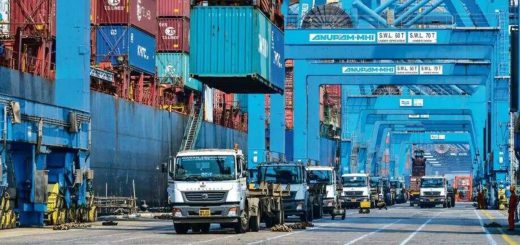The Value Of Environmentally Friendly Shipping And The Steps Towards It
Many environmentalists worldwide express concern about how the environment is affected by packaging and shipping due to the increasing logistical costs driven by rising demand for goods. Following the epidemic, there has been a noticeable increase in the capability of package delivery. Additionally, it is crucial that logistics firms move towards implementing eco-friendly freight practises.
It’s interesting that environmentally friendly shipping is important here, as the way we pack and transport items significantly influences the environment. One must take action to offset the company’s carbon footprint while ensuring that customer experiences are not compromised in order to reduce the effect. Due to this, both customers and companies are now expecting more environmentally friendly buying practises.
Let’s learn some helpful pointers to make your shipping operation more environmentally friendly.
What Exactly Does “Eco-Friendly Shipping” Mean?
The term “eco-friendly” or “environmentally friendly” shipping refers to the efficient use of resources and consideration for the environment. It includes the use of biodegradable materials, which are easily recycled, reused, and degraded. In order to reduce its environmental effect, it also entails combining orders or transactions into a single delivery while utilising low-emitting goods methods.
How can you implement eco-friendly shipping?

Choose an Eco-Friendly Logistics Partner
Every logistics partner has a fleet. The way a shipping firm manages its fleet makes a significant impact in providing sustainable or eco-friendly shipping for the business. You may take a step towards a low-carbon transportation procedure by employing an eco-friendly freight forwarding agency carrier. Ensure that the organisation use sustainable procedures and eco-friendly freight solutions, such as green packaging.
Consider Green Packaging.
Packaging is a major contributor to transportation damage and environmental degradation. To reduce packaging waste, choose green packaging such as compostable mailer bags and biodegradable packing. When transporting the merchandise, use environmentally friendly materials. Most reputable e-Commerce and logistics organisations will find Cornflour packaging, biodegradable materials, Air pillows, recycled craft paper, corrugated cardboard, packing peanuts, and adapted shipping containers to be worthwhile packaging solutions.
Reduce the size of the packaging
Ensure that the goods are efficiently packed by using tiny box sizes and less packing material, as long as it is not excessively tight and detrimental to the products. It minimises the dimensional weight and total cost of the cargo while decreasing waste and carbon footprint. When a little item is put in a large box, the most common packing error occurs. In addition, when it comes to fillers, packaging businesses frequently employ Styrofoam. Polystyrene degrades the environment and is also deemed toxic. Biodegradable packing peanuts derived from natural sources such as wheat and cornflour are the most efficient option.
Create a Long-Term Returns Programme for Your Products
One way to reduce one’s carbon footprint is to provide a more sustainable product return method. Creating a mutually beneficial returns programme is a win-win situation for both you and the consumer. Returning products is ecologically deemed harmful because of the fuel used and pollutants. However, destroying defective things rather than returning them has significant environmental repercussions. The ideal answer is to not request the old faulty goods and instead consider delivering a new product, which reduces the irritation of the return procedure while reducing shipping pollution.
Create a Long-Term Returns Programme for Your Products
One way to reduce one’s carbon footprint is to provide a more sustainable product return method. Creating a mutually beneficial returns program is a win-win situation for both you and the consumer. Returning products is deemed ecologically harmful because of the fuel used and pollutants. However, destroying defective things rather than returning them has significant environmental repercussions. The ideal answer is to not request the old faulty goods and instead consider delivering a new product, which reduces the irritation of the return procedure while reducing shipping pollution.
Shipping in Bulk
Individual packaging is necessary for the majority of the items. However, try not to ship them separately. Instead, send in bulk to save resources while also helping to keep the environment safe! When we send a big number of boxes, we save gasoline while reducing unnecessary freight space. For example, if a customer wants many things, ship them all in one container to save money on packaging.
For more info check – www.trucksuvidha.com




Recent Comments